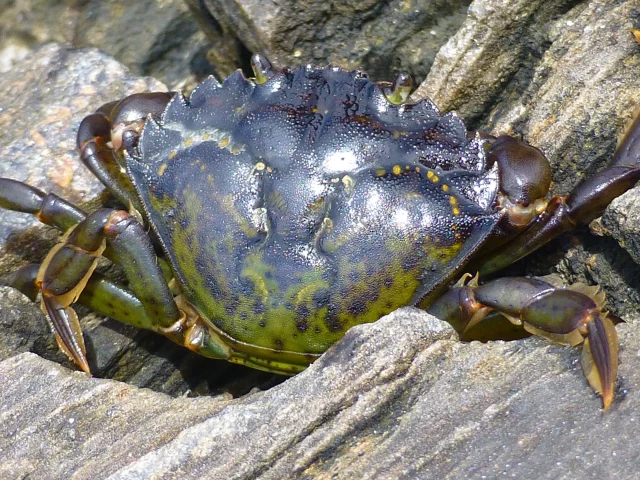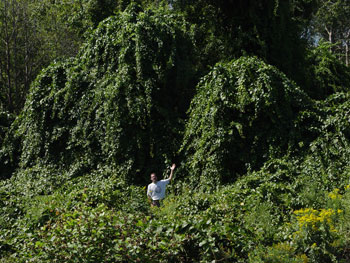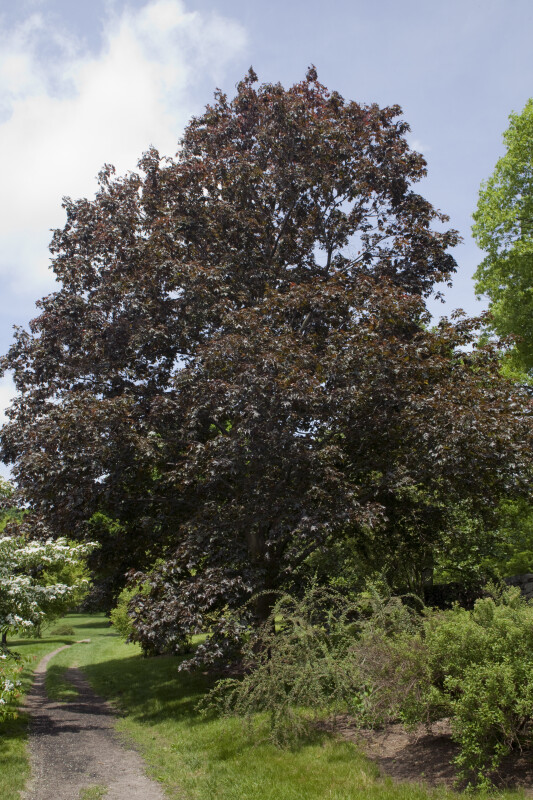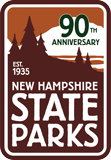
Matthew Galvin – SCA NH Corps – Discover the Power of Parks Interpretive Ranger
“Invasive species” to us New Englanders is something we may have learned about in school but did not pay much mind to. “Oh, It’s probably some big problem in California, or the Amazon Rainforest. Nothing to worry about here,” an idea we often associate with environmental changes. Well, that is a falsehood, invasive species are a problem occurring here in New England.
Before we get into the specifics, what is an invasive species? An invasive species is two things:
- Not native to the area and
- changes the biodiversity (percentage of plants, animals, etc.) by out competing native species.
Nonnative, on the other hand, is a species living outside its natural range but not affecting the biodiversity. Nonnative species are therefore not an environmental problem, while invasive species introduce problems as they flourish in their new habitat. Below I have listed a few species occurring, which you will likely encounter when visiting the NH seacoast.
Asiatic Bittersweet (Celastrus orbiculatus)

tree. Photo by Maine Department of Agriculture, Conservation & Forestry
The king of all local invasive species: Asiatic Bittersweet (previously referred to as Oriental Bittersweet), is most obvious as an intrusive vine. Originally from East Asia, it is thought that bittersweet was introduced around the Civil War period of the 1860s as an ornamental plant. Additionally, the speed it grows seems to be unrivaled. So, many infrastructure projects that left exposed ugly structures had bittersweet planted around them to quickly cover them. This helped people cover up their mistakes. What we did not realize is that since it grows as a vine, it will typically grow above its host and shade out other plants. Perhaps this is a good thing for buildings, but for our sweet little sugar maples? I don’t think so! Not only do these vines steal the sunlight of native trees, they also damage trees by strangling them as they grow.
European Green Crab (Carcinus maenas)

Green crabs are often not best identified by their color but by their 5 spiney points to the outside of the head from the eye, and three lobes in between the eye. Photo by Kelly Martin, Washington Seagrant
The Green Crab made its way to the East Coast around the end of the 1800s. While the cause of introduction from Europe is unclear, green crabs most likely arrived accidentally through hitching a ride on ships (via ballast waters or hull fouling). Green crabs are generalist foragers and adapt well to new environments quickly. They make their mark on our ecosystems by out competing other species by eating their food sources – mollusks and other smaller animals are eaten by seabirds, native crabs, and fish. Strategies for controlling invasive green crabs include eating them (not so popular in New England), are hard to measure since they continue to be transported by shipping vessels, and are not land animals that we can easily monitor. As more research is done, it is likely that we will conclude there is no way we can eradicate these crabs. We will just need to work on strategies to limit their impact on the local flora and fauna.
Norway Maple (Acer platanoides)

Norway maples have green leaves throughout the summer. Photo by Dr. Roy Winkelman
Originally brought over from Europe around the mid-1700s as an ornamental tree, the Norway maple caught on quickly as a popular suburban tree. The tree was marketed as a fast-growing shade tree. This tree was often mistaken for a sugar maple, because their leaves are almost identical. The best way to check the difference is by examining to see if there is a milky sap that runs through the leaf stem of the Norway Maple during the spring and summer. While sugar maples have greenish-colored interior stems (the best place to sample a leaf is near the trunk at the bottom of the tree trunk). The Norway Maple took center stage in town centers after the American Elm tree, was wiped out by Dutch Elm Disease. Unfortunately, the Norway Maple grows quickly, loves disturbed or polluted environments, and provides a lot of shade. These characteristics mean that this tree will outcompete other species like the sugar maple, which has a low tolerance for poor air quality, excess road salt, and other environmental pollution. Once it has out-competed other species, the shade stops many native trees and shrubs from growing. We may appreciate the Norway maple for its dark red leaves and speedy growth, but ultimately, we should be prioritizing the sugar maple here in New England – it provides the sap that creates great syrup!
Phragmites or Common Reed (Phragmites australis)

This grass species dominates wetlands outside its natural range and outcompetes native species. Once humans take out the natural species around a wetland for infrastructure or housing projects, invasive phragmites can quickly take over the disturbed area. What makes it a great colonizer is its ease of spread due to its seed head housing a large number of seeds. The native plant can be disturbed by natural disasters, such as flooding, which also allows the invasive phragmites to take hold and outcompete it.
For more information about these invasive species and mitigation strategies, visit the University of New Hampshire Cooperative Extension by clicking on the link below. https://extension.unh.edu/natural-resources/forests-trees/invasive-species
